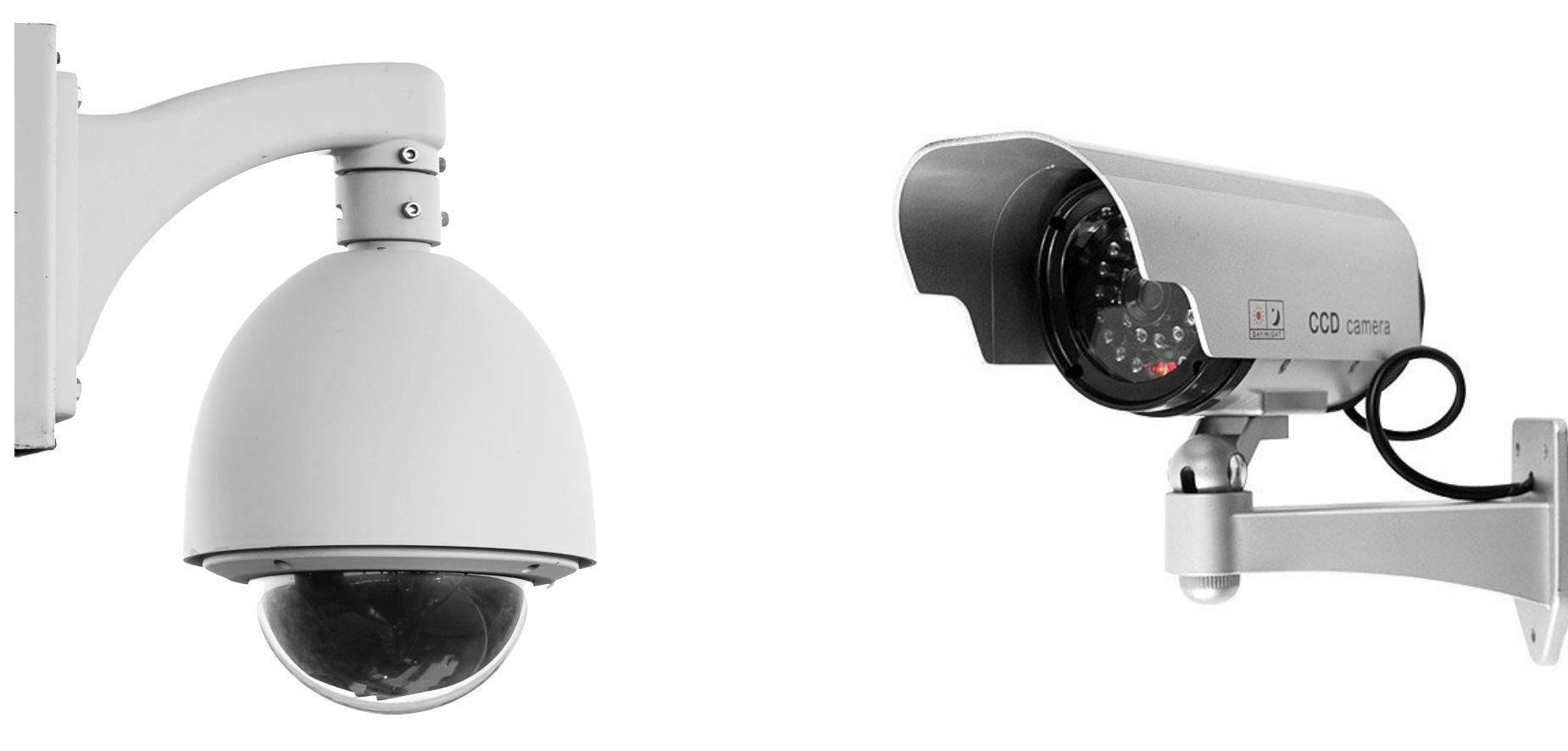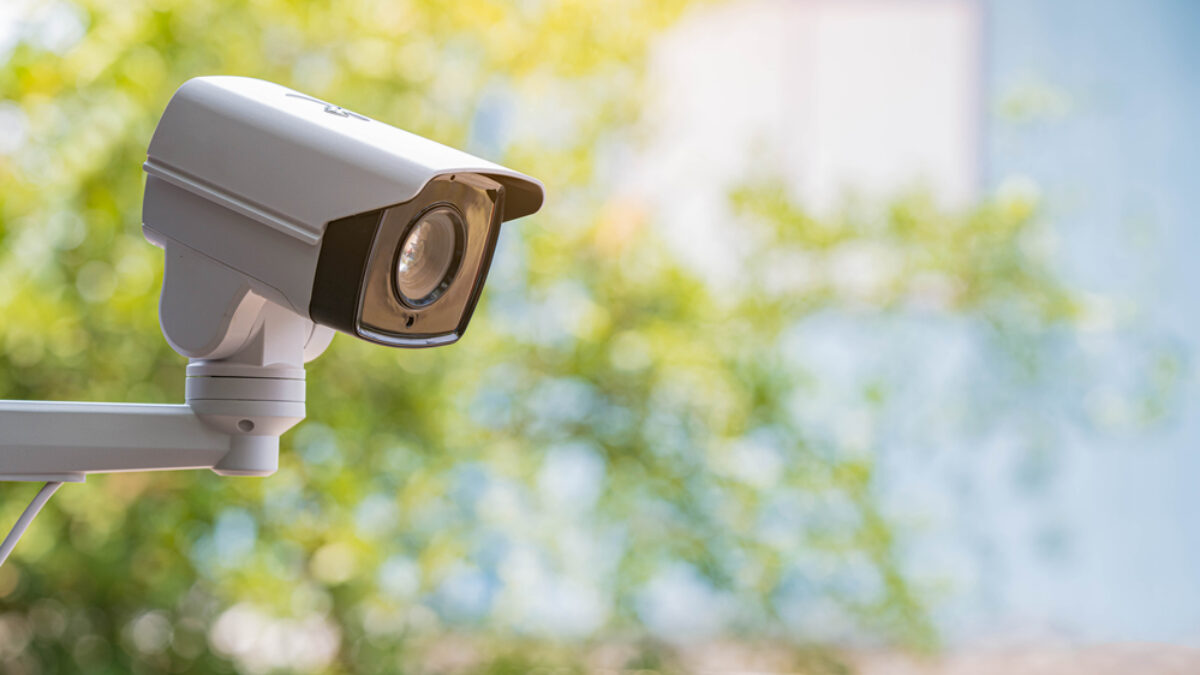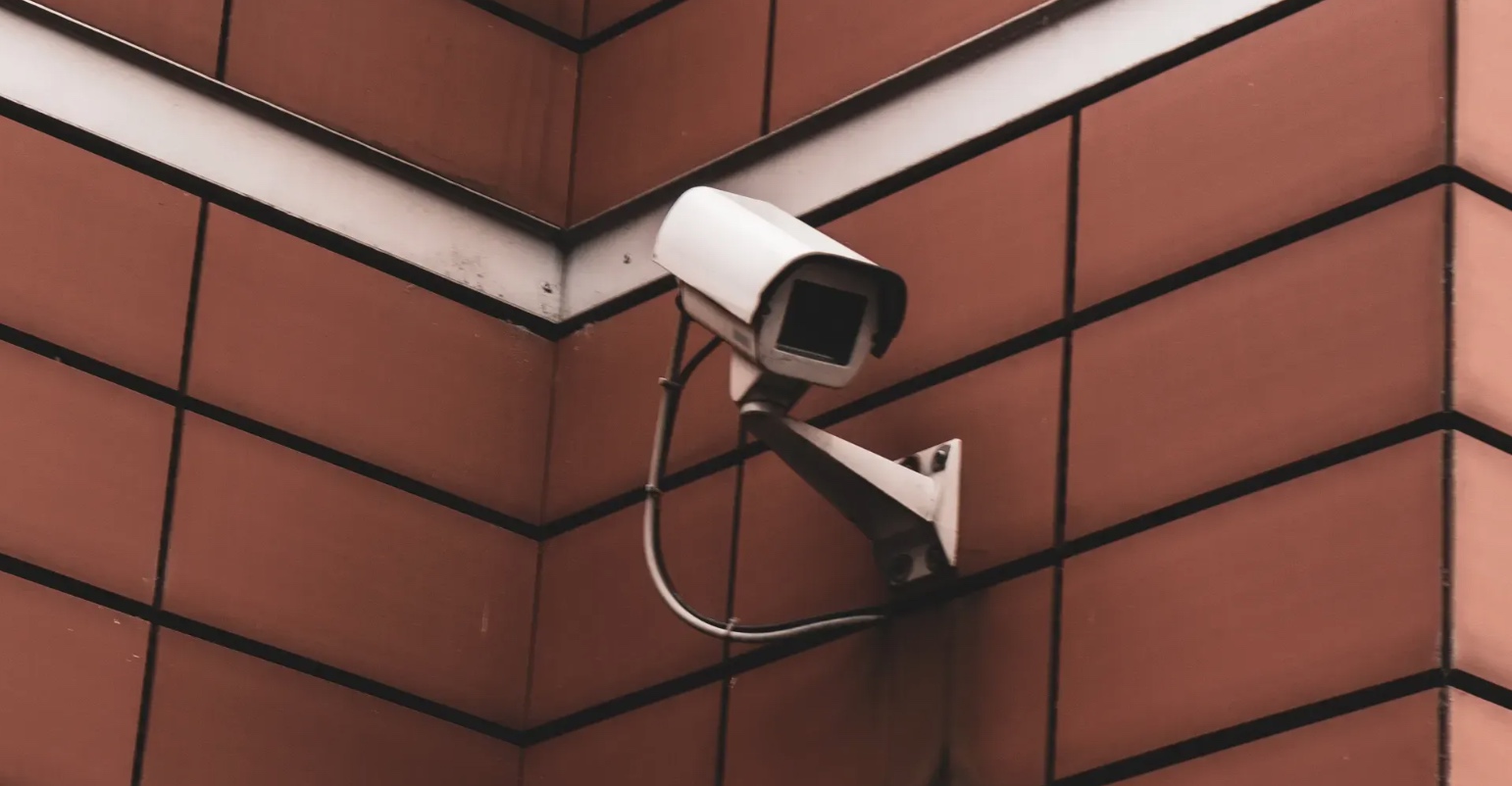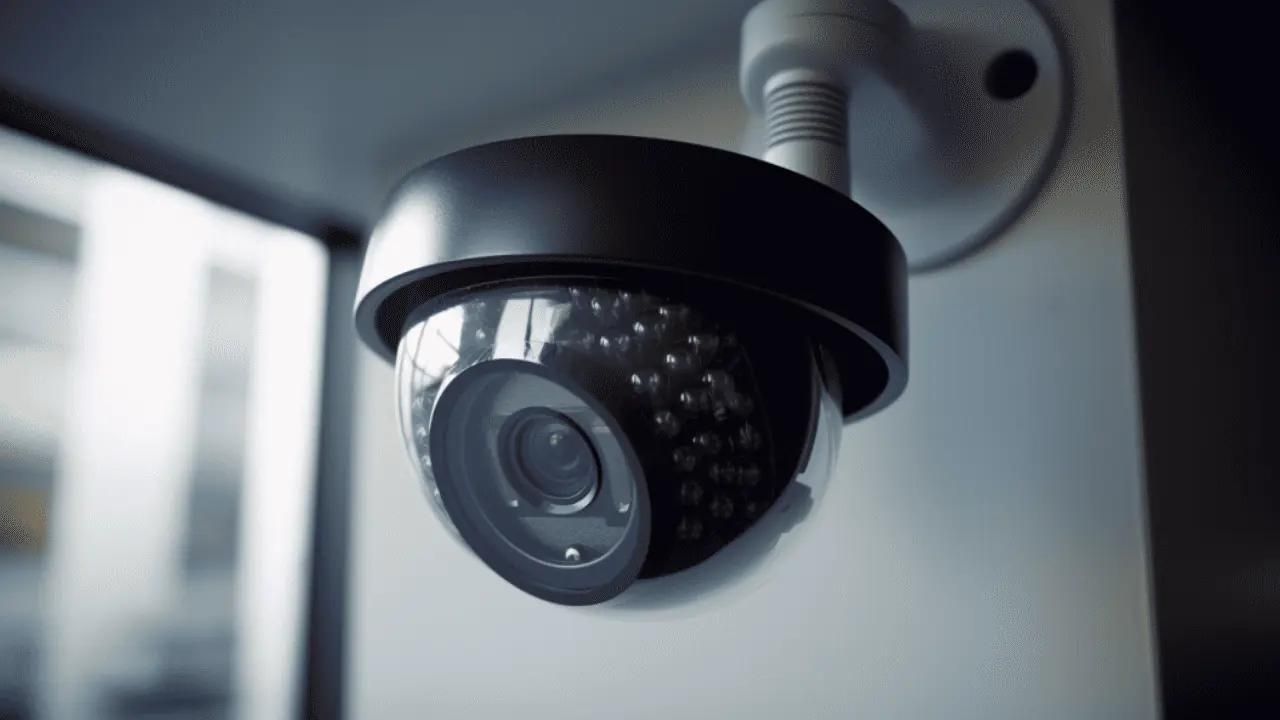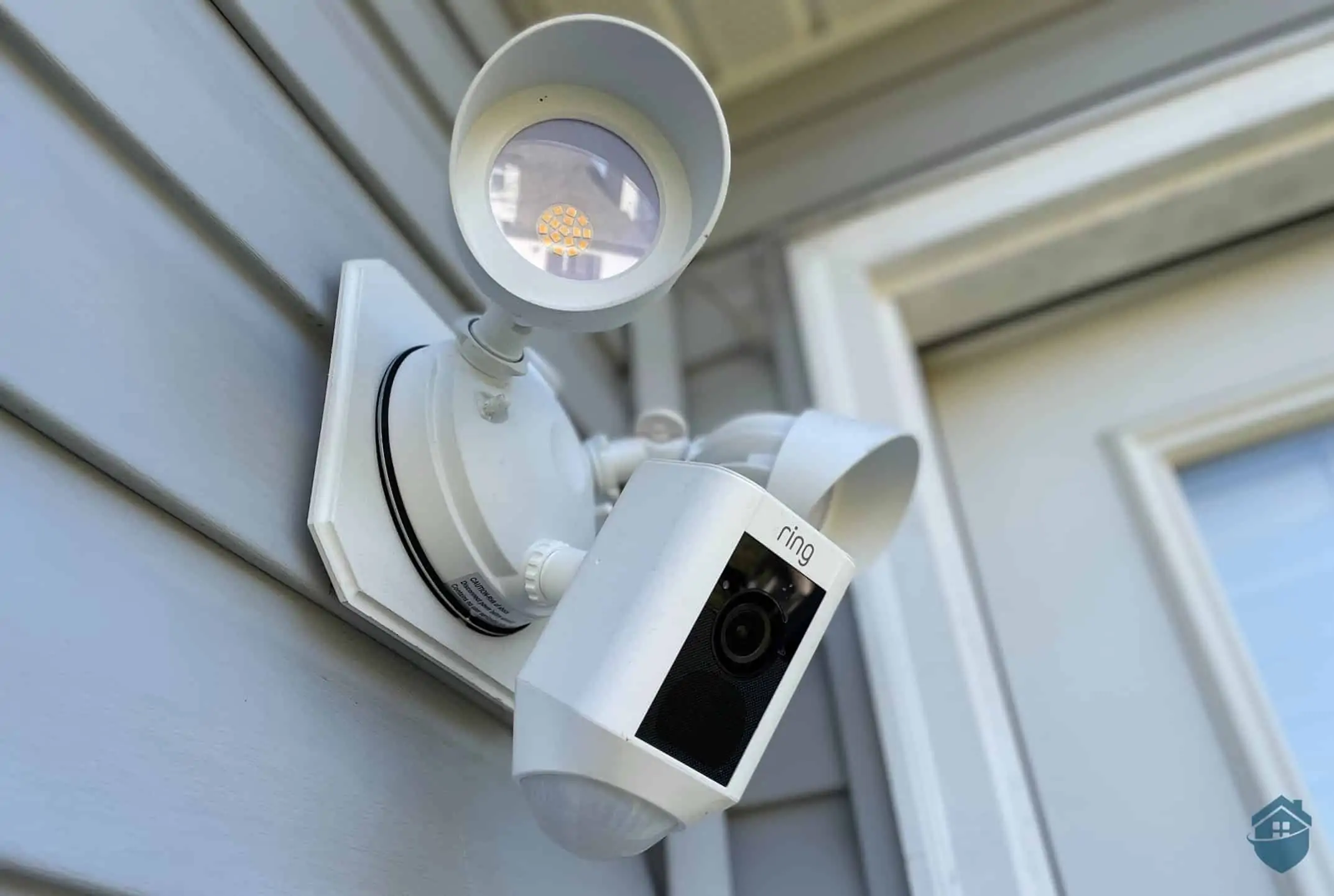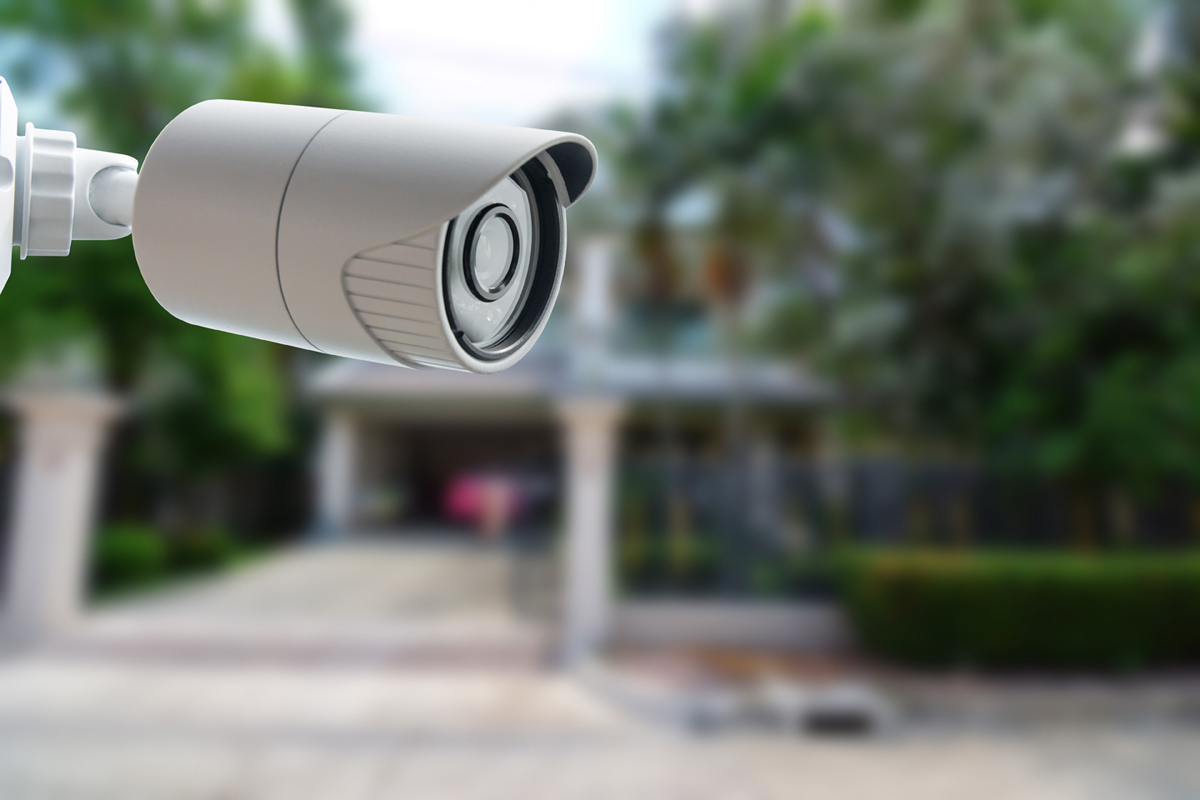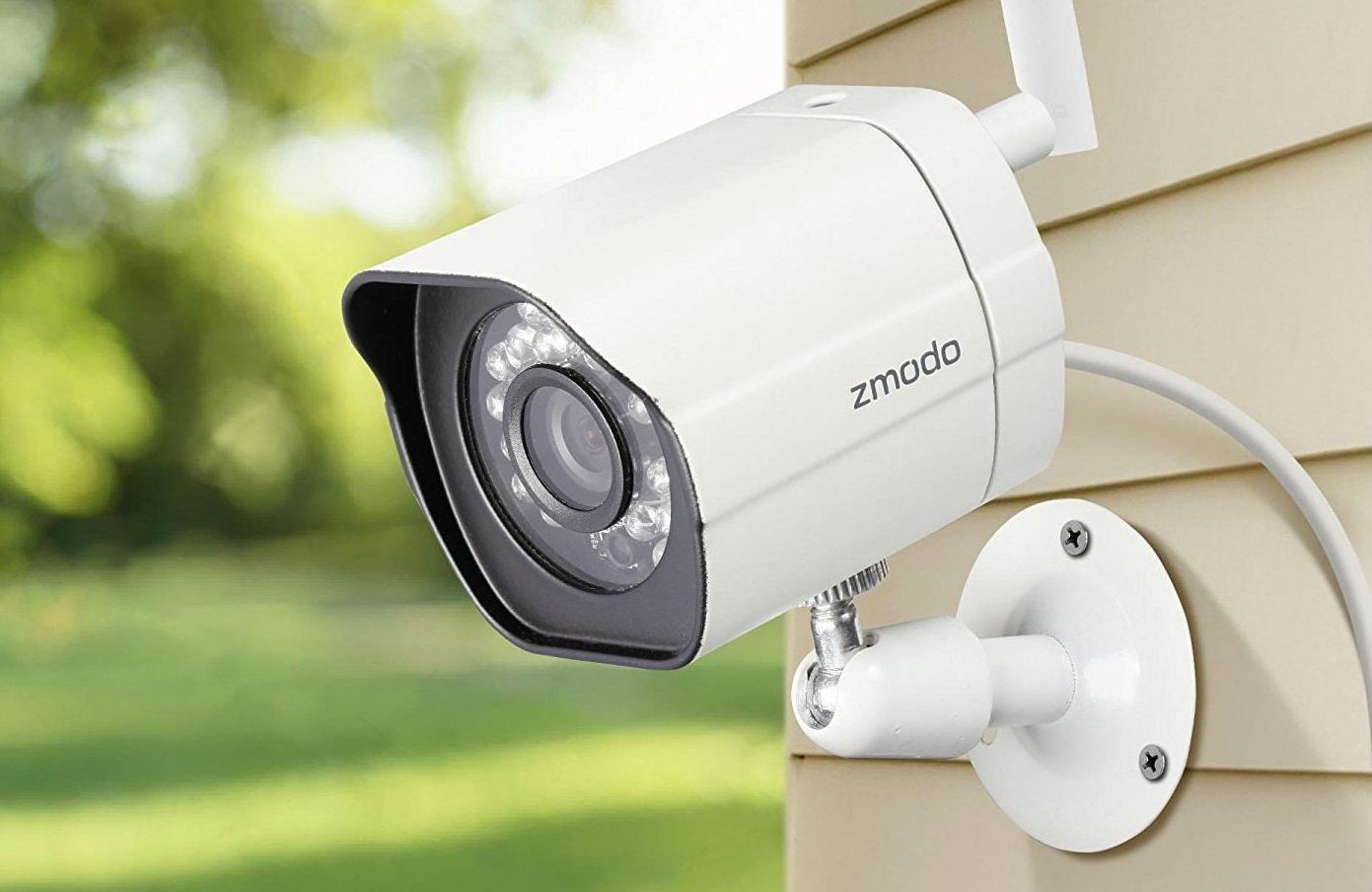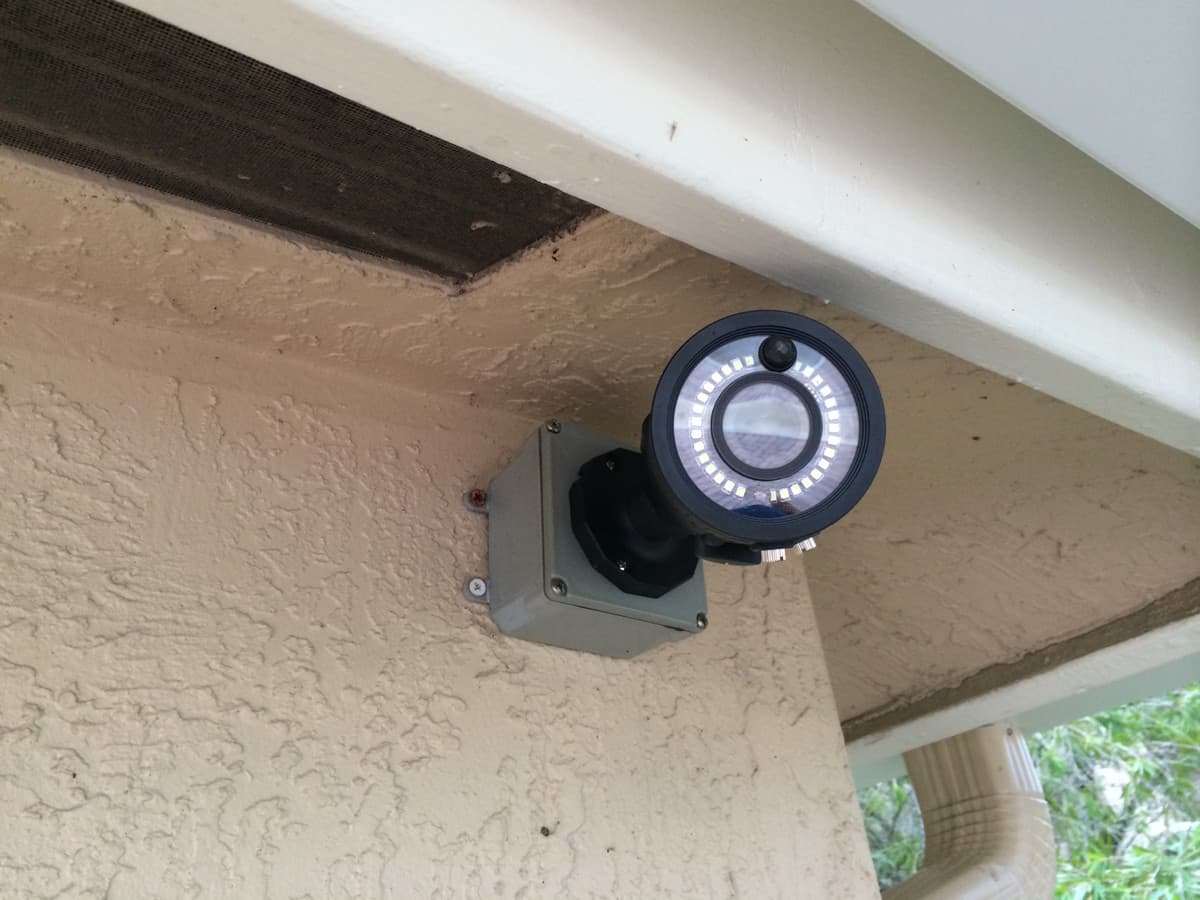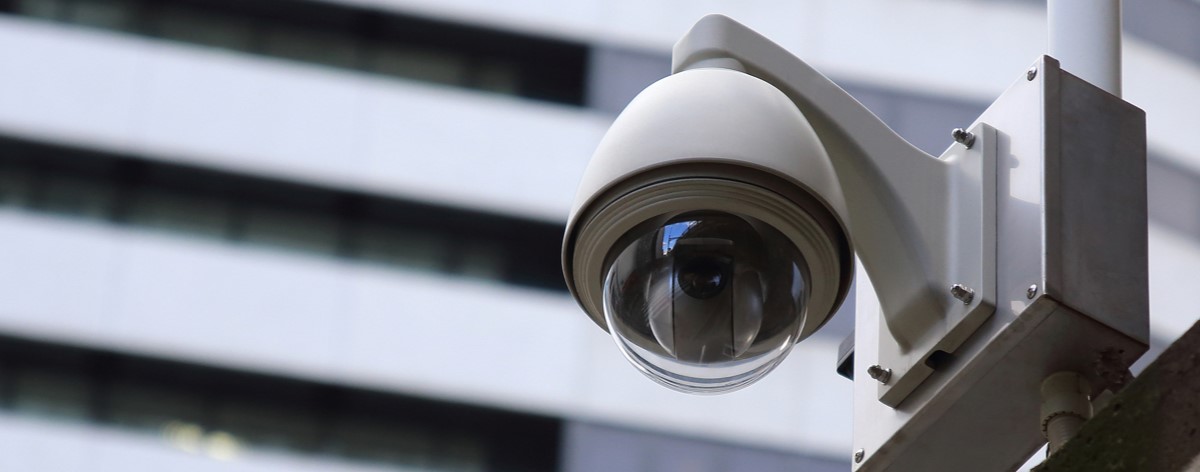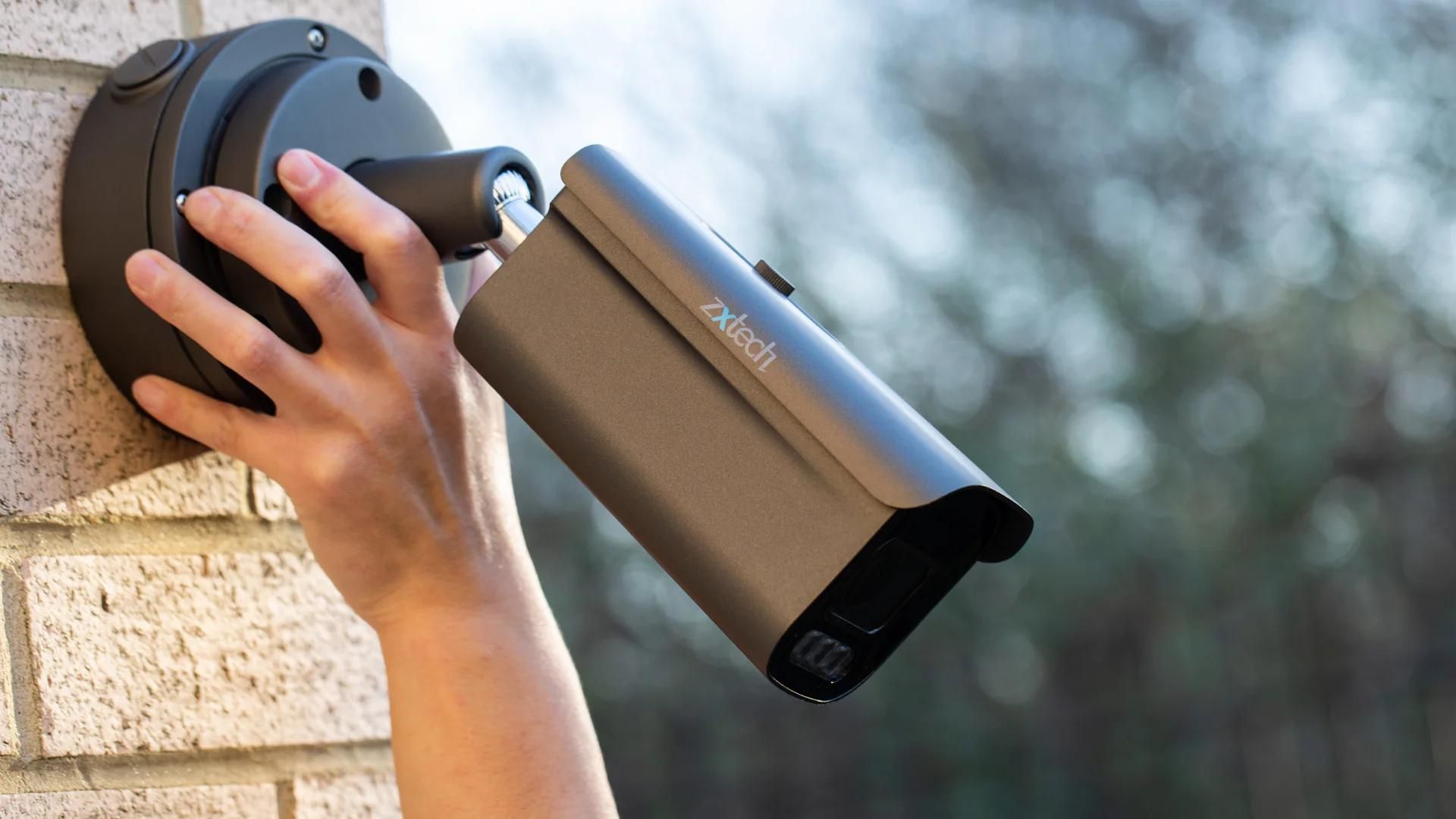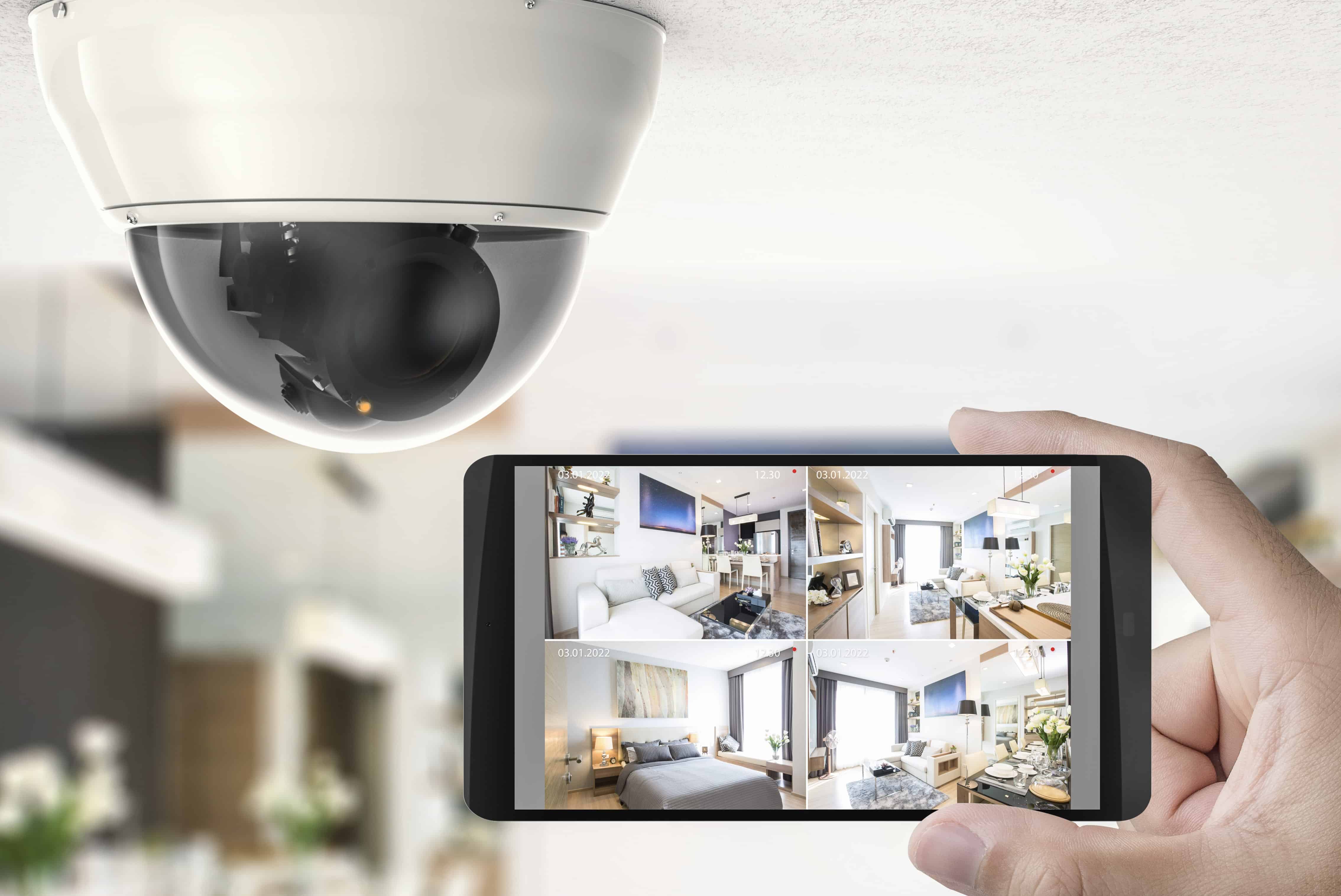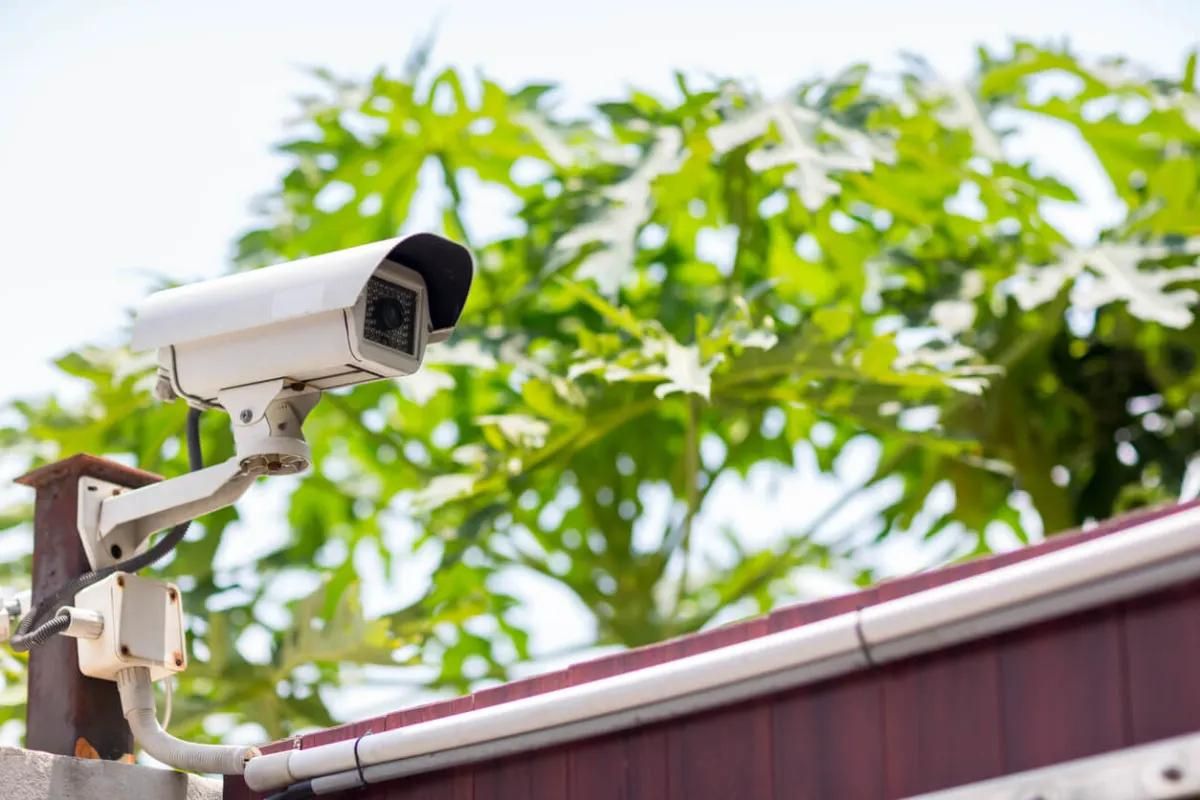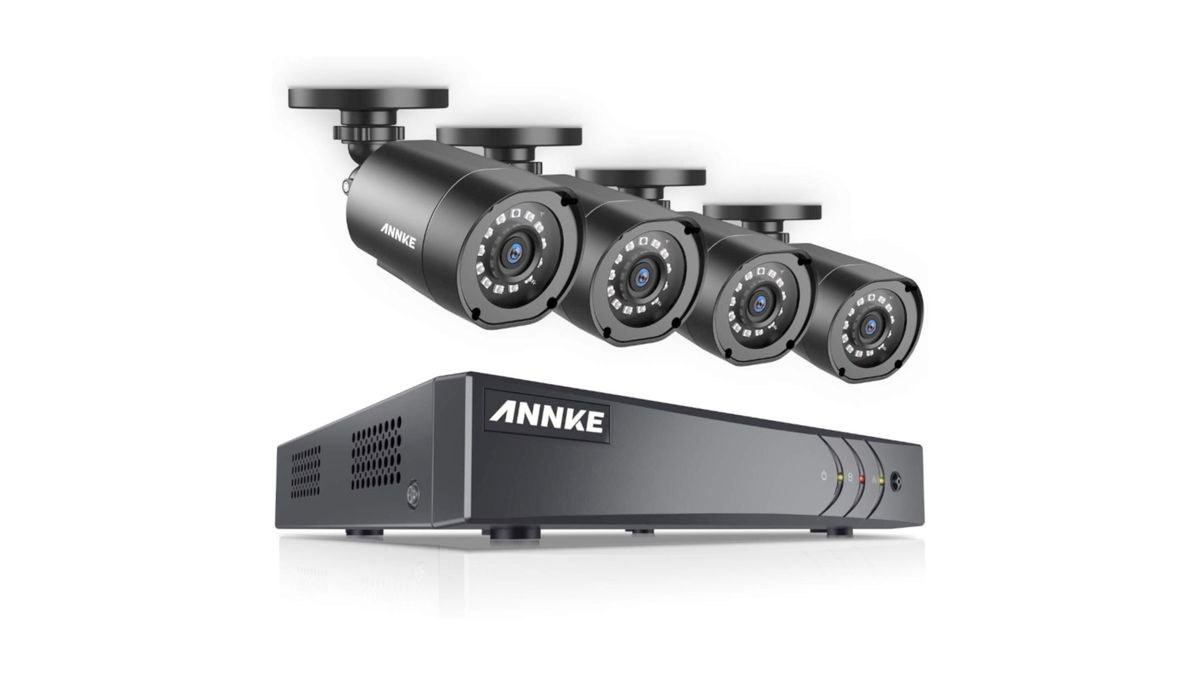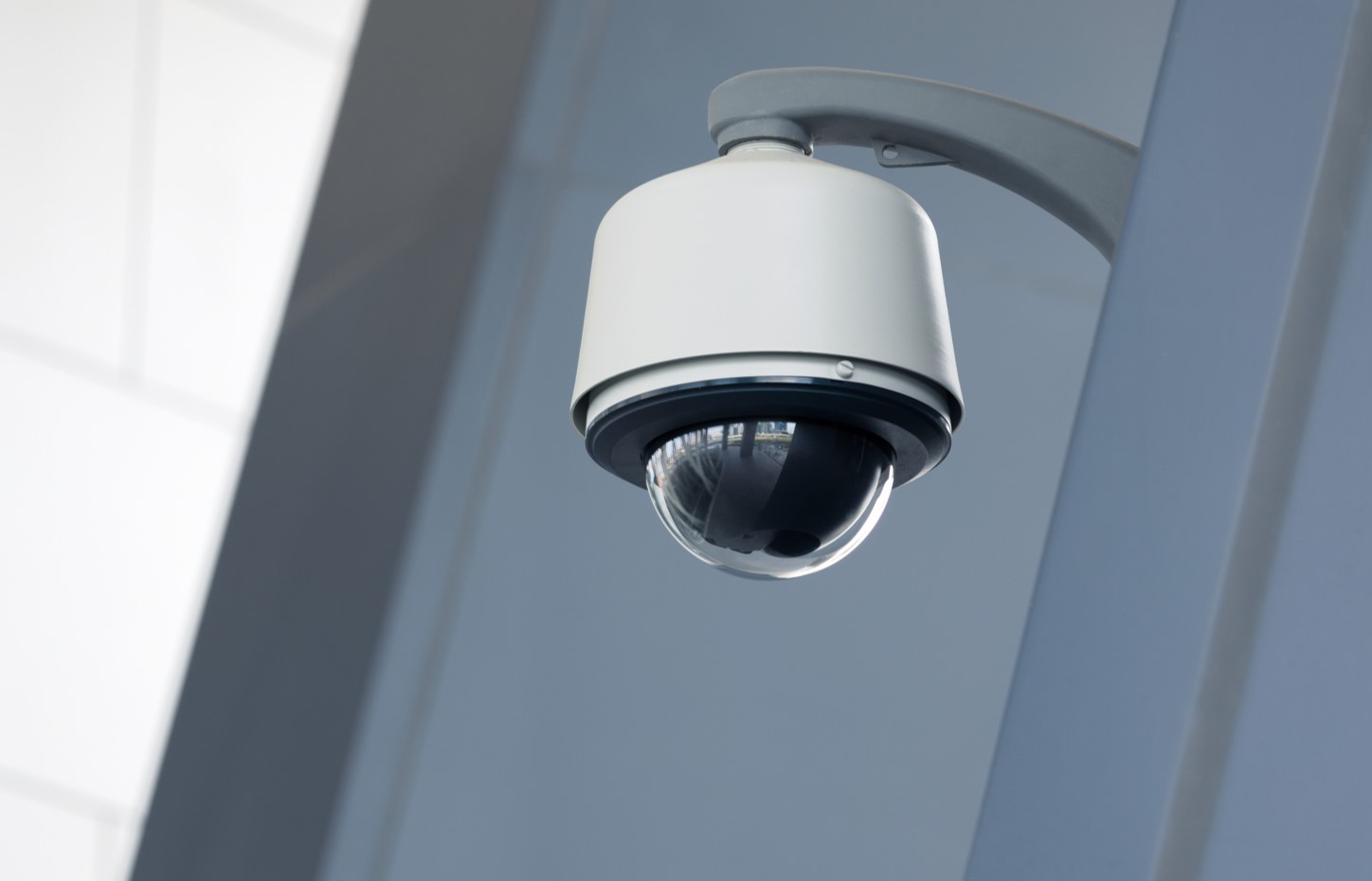Home>Home Security and Surveillance>What Is A Dome Security Camera
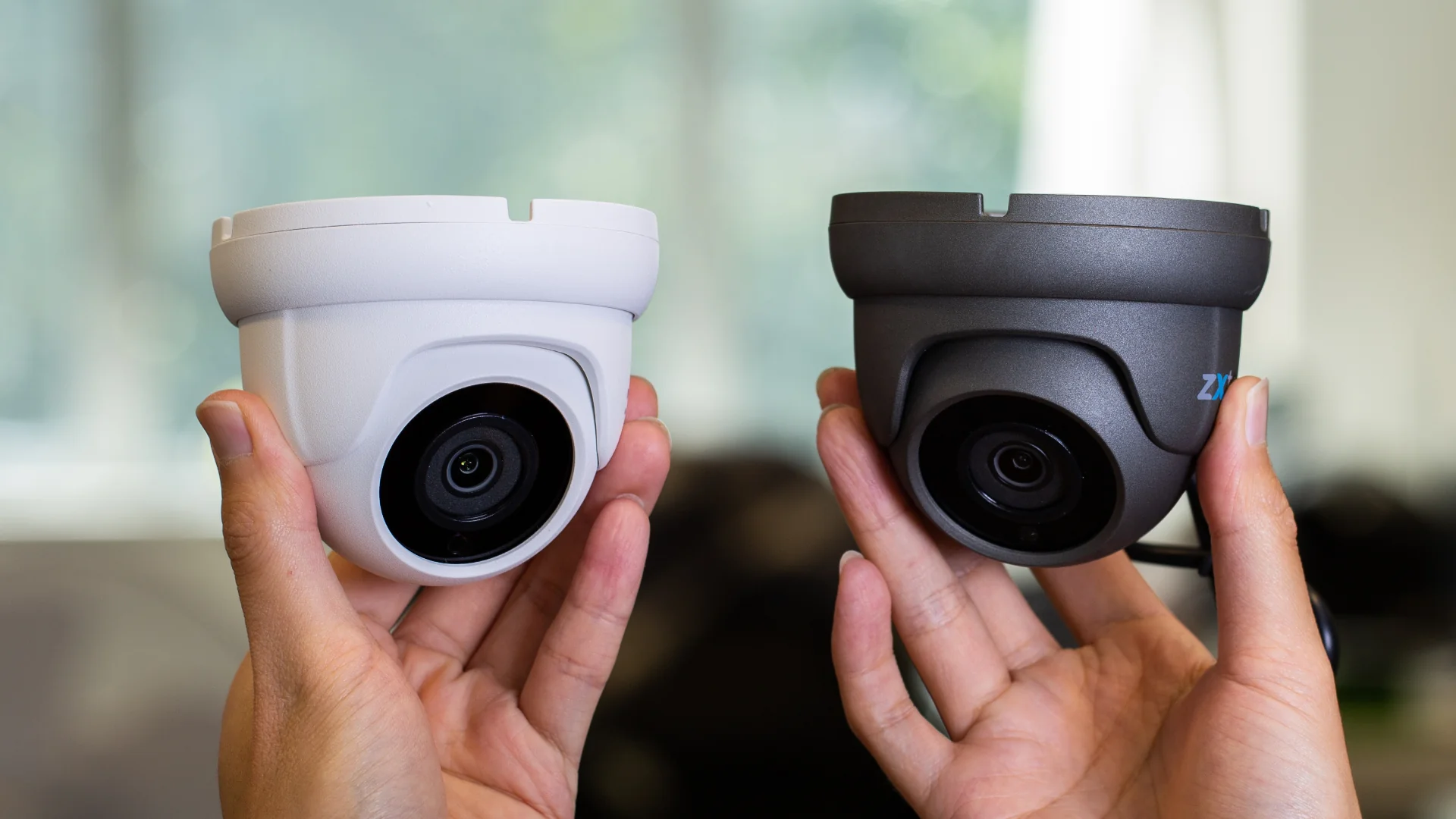

Home Security and Surveillance
What Is A Dome Security Camera
Modified: March 6, 2024
Discover the benefits of using dome security cameras for your home security and surveillance needs. Ensure complete peace of mind with advanced features and superior image quality.
(Many of the links in this article redirect to a specific reviewed product. Your purchase of these products through affiliate links helps to generate commission for Storables.com, at no extra cost. Learn more)
Introduction
Welcome to the world of home security and surveillance! In an era where technology plays a vital role in our everyday lives, it’s essential to prioritize the safety and security of our homes. One of the most effective ways to achieve this is by investing in a high-quality security system. Among the multitude of options available, dome security cameras have gained significant popularity.
In this comprehensive guide, we will explore the ins and outs of dome security cameras, including their definition, benefits, types, features to consider, installation and placement techniques, common uses, as well as their limitations and drawbacks.
Whether you are a home or business owner looking to enhance the security of your property, or an individual interested in learning more about the world of surveillance technology, this article will provide you with the knowledge you need to make informed decisions when it comes to choosing and utilizing dome security cameras.
So, let’s delve into the fascinating world of dome security cameras and discover how they can bring peace of mind to your life.
Key Takeaways:
- Dome security cameras are discreet, durable, and versatile, offering comprehensive surveillance coverage for homes, businesses, and public spaces. Their advanced features and flexible installation options make them an excellent choice for enhancing security.
- While dome security cameras have limitations, such as visible direction and maintenance challenges, proper planning and implementation can help maximize their effectiveness. Understanding their features and potential drawbacks allows for informed decision-making in selecting and utilizing dome security cameras.
Read more: How To Mount A Dome Security Camera
Definition of a Dome Security Camera
A dome security camera is a type of surveillance camera that is housed within a dome-shaped enclosure. These cameras are commonly used for indoor and outdoor security purposes to monitor activities and deter potential intruders. The dome-shaped design serves both practical and aesthetic purposes, making them a popular choice for various settings.
Dome security cameras are available in both analog and digital formats. Analog dome cameras use traditional coaxial cable connections and are often associated with older security systems. On the other hand, digital dome cameras, also known as IP cameras, utilize internet connectivity to transmit video footage.
The dome enclosure of these cameras provides several advantages. Firstly, it offers protection against vandalism or tampering, as the dome is typically made of sturdy materials such as polycarbonate or metal. This makes it difficult for potential intruders to access or disable the camera. Additionally, the dome design provides a degree of concealment, making it challenging for individuals to determine the direction in which the camera is pointed.
Aside from their physical design, dome security cameras often come equipped with a range of advanced features. These can include high-resolution image sensors for clear and detailed video footage, infrared (IR) capabilities for low-light or nighttime surveillance, wide-angle lenses for broader coverage, and pan-tilt-zoom (PTZ) functionality for flexible camera positioning and control.
Overall, the dome security camera combines practicality, durability, and aesthetics to provide an effective surveillance solution for residential, commercial, and public spaces.
Benefits of Dome Security Cameras
Dome security cameras offer a plethora of benefits that make them an excellent choice for both residential and commercial surveillance needs. Let’s take a closer look at the advantages of using dome security cameras:
- Discreet and Unobtrusive: The dome-shaped design of these cameras allows them to blend seamlessly into their surroundings. They are less noticeable and can be easily mounted on ceilings or walls without drawing attention. This discreet nature makes them an ideal choice for areas where aesthetics and subtlety are important.
- Deterrent for Potential Intruders: The presence of a dome security camera can act as a powerful deterrent against criminal activity and trespassing. The uncertainty of whether the camera is actively monitoring or not can discourage potential intruders from attempting any illicit activities.
- 360-Degree Surveillance Coverage: Dome security cameras often feature a wide-angle lens that allows for a broader field of view. This means that a single camera can cover a larger area compared to other types of cameras. The ability to monitor a 360-degree area is particularly useful in open spaces or areas where a comprehensive view is required.
- Protection against Vandalism: The dome enclosure of these cameras provides an added layer of protection, making them resistant to vandalism and tampering. The durable and sturdy construction of the dome makes it difficult for potential intruders to damage or disable the camera, ensuring continuous surveillance and peace of mind.
- Indoor and Outdoor Use: Dome security cameras are versatile and suitable for both indoor and outdoor installations. They are designed to withstand various weather conditions, such as rain, wind, and extreme temperatures. This flexibility allows for optimal placement and coverage in any environment.
- Flexible Installation Options: Dome security cameras can be mounted on ceilings, walls, or even recessed into surfaces. This adaptability in installation options enables users to position the cameras in the most strategic locations to achieve maximum coverage and surveillance effectiveness.
- Remote Access and Monitoring: Many dome security cameras are equipped with advanced features like remote access and monitoring. This allows users to view live video footage or recorded footage from anywhere using a smartphone, tablet, or computer. Remote access enhances convenience and enables users to stay connected to their security system at all times.
In summary, the discreet design, deterrence factor, wide coverage, vandal-resistant enclosure, versatility, flexibility, and remote monitoring capabilities make dome security cameras an excellent choice for enhancing the security of homes, businesses, and public areas.
Types of Dome Security Cameras
Dome security cameras come in various types, each with its own unique features and capabilities. Understanding the different types can help you choose the right camera for your specific surveillance needs. Let’s explore the most common types of dome security cameras:
- Fixed Dome Cameras: Fixed dome cameras are stationary cameras that provide a fixed viewing angle. They are popular for their compact size and unobtrusive design. These cameras are often used in indoor settings, such as homes, offices, or retail stores, where a specific area needs to be closely monitored.
- Varifocal Dome Cameras: Varifocal dome cameras are similar to fixed dome cameras but offer the added advantage of adjustable focal length. This means that the viewing angle can be manually adjusted to zoom in or out, providing more flexibility in capturing specific areas of interest. Varifocal dome cameras are commonly used in areas where the surveillance needs may change over time, such as parking lots or outdoor spaces.
- PTZ Dome Cameras: PTZ, which stands for pan-tilt-zoom, dome cameras are highly advanced and versatile. These cameras can pan horizontally, tilt vertically, and zoom in or out to provide comprehensive coverage of a large area. PTZ dome cameras are commonly used in areas that require active monitoring and tracking, such as parking lots, large outdoor spaces, or public areas.
- Infrared Dome Cameras: Infrared dome cameras, also known as night vision dome cameras, are equipped with infrared LEDs that allow them to capture clear video footage even in low-light or complete darkness. These cameras are ideal for areas where surveillance is required 24/7, such as entrances, parking garages, or outdoor spaces during nighttime hours.
- Vandal-Proof Dome Cameras: Vandal-proof dome cameras are specifically designed to withstand tampering or attempts at destruction. These cameras are housed in a heavy-duty, impact-resistant dome enclosure, making it extremely difficult for intruders to damage or disable them. Vandal-proof dome cameras are commonly used in high-risk areas or locations prone to vandalism, such as public transportation hubs, retail stores, or outdoor environments.
It’s important to consider your specific surveillance requirements when selecting a dome security camera type. Factors such as the desired viewing angle, lighting conditions, need for zoom functionality, and the level of protection required will influence your decision.
By understanding the different types of dome security cameras and their capabilities, you can choose the camera that best suits your surveillance needs and provides optimal security for your home or business.
Features to Consider in Dome Security Cameras
When selecting a dome security camera, it’s important to consider various features that can enhance the camera’s functionality and suit your specific surveillance requirements. By understanding these features, you can make an informed decision and choose a camera that meets your needs. Let’s explore some key features to consider when selecting a dome security camera:
- Resolution: The resolution of a camera determines the clarity and detail of the captured video footage. Higher resolution cameras, such as those with 1080p or 4K resolution, provide sharper images and more accurate details. Consider the level of detail you require and select a camera with an appropriate resolution for your needs.
- Image Sensor: The image sensor is responsible for capturing the video footage. Look for cameras with quality image sensors, such as CMOS or CCD sensors, to ensure clear and accurate images in various lighting conditions.
- Low-Light Performance: If you need to monitor areas with low-light conditions, consider cameras with good low-light performance. Look for features such as infrared (IR) capabilities or cameras with wider aperture lenses to capture better quality footage in low-light environments.
- Field of View: The field of view (FOV) of a camera determines how much area it can cover. Consider the focal length and lens options to determine the desired FOV, whether you need a wide-angle lens for broader coverage or a narrower lens for more focused surveillance.
- Zoom Capability: Some dome security cameras offer zoom functionality, allowing you to digitally or optically zoom in on specific areas of interest. This feature can be valuable for capturing fine details or for monitoring large areas with the ability to focus on specific points when needed.
- PTZ Functionality: PTZ (pan-tilt-zoom) cameras offer the ability to remotely control the camera’s movement. This allows for flexible positioning and tracking of subjects within the surveillance area. Consider whether PTZ functionality is necessary for your surveillance needs.
- Wide Dynamic Range (WDR): Cameras with wide dynamic range technology can capture clear footage even in high-contrast lighting conditions. This feature is particularly useful in areas with bright or backlit environments, such as entrances or windows.
- Audio Capabilities: Some dome security cameras come with built-in microphones or audio input/output ports, allowing for two-way audio communication. This can be beneficial for interactive monitoring or for capturing audio evidence alongside video footage.
- Network Connectivity: Consider whether you prefer a wired or wireless connection for your dome security camera. Wired cameras provide a more stable and reliable connection, while wireless cameras offer more flexibility in terms of installation and positioning. Additionally, look for cameras that support remote viewing and monitoring capabilities.
- Storage Options: Determine the storage options available with the camera. Some cameras offer onboard storage via SD cards or have the ability to connect to a network video recorder (NVR) for centralized storage and management of footage.
By considering these key features, you can select a dome security camera that suits your specific surveillance needs and provides the functionality and capabilities required for optimal security monitoring.
When installing a dome security camera, make sure to place it in a location with a wide field of view and good lighting. This will help maximize its effectiveness in monitoring the area.
Read also: 9 Best Dome Security Cameras For 2024
Installation and Placement of Dome Security Cameras
The installation and proper placement of dome security cameras are crucial factors in maximizing their effectiveness. Here are some key considerations for installing and positioning your dome security cameras:
- Identify Vulnerable Areas: Start by identifying the areas of your property that require surveillance. Determine entry points, blind spots, and high-risk areas that need to be monitored. This will help you decide the number of cameras needed and their optimal placement.
- Mounting Options: Dome security cameras can be mounted on walls, ceilings, or poles, depending on the specific camera and your surveillance needs. Consider the height and angles required for capturing the desired field of view and ensure that the camera is securely mounted.
- Field of View: Position the camera in a way that maximizes its field of view and covers the desired area. Aim to capture the entry points, walkways, and other critical areas within the surveillance zone. Consider the camera’s lens focal length and adjust the camera angle accordingly to achieve the required coverage.
- Avoid Obstructions: Ensure that there are no obstructions such as trees, bushes, or walls blocking the camera’s view. These obstructions can interfere with the camera’s effectiveness and limit its field of view. Regularly trim vegetation or adjust the camera’s position as needed to maintain clear sightlines.
- Power and Connectivity: Consider the power supply and connectivity requirements of the camera. Ensure that there is a nearby power source or plan for the installation of electricity if required. For wired cameras, ensure that the necessary cabling is properly routed for a secure and hidden installation.
- Weatherproofing: If installing dome security cameras outdoors, make sure they are weatherproof and designed to withstand varying weather conditions. Ensure that the camera is protected from rain, snow, dust, and extreme temperatures to maintain its functionality and longevity.
- Security of Cabling: If using wired cameras, ensure that the cabling is properly secured and hidden to prevent tampering or sabotage. Conceal the wiring within walls, ceilings, or conduit systems for a clean and professional installation.
- Consider Lighting: Take into account the lighting conditions in the area where the camera will be installed. For low-light environments, consider cameras with infrared capabilities or install proper lighting sources to ensure clear visibility during nighttime or poorly lit conditions.
- Regular Maintenance: Perform regular maintenance checks on your dome security cameras to ensure they are functioning optimally. Clean the camera lenses, check for any loose connections, and test the camera’s functionality periodically.
- Follow Legal Regulations: Familiarize yourself with local laws and regulations regarding the use of surveillance cameras to ensure compliance with privacy and legal requirements. Respect the privacy of others and use the cameras for legitimate security purposes.
By following these installation and placement guidelines, you can ensure that your dome security cameras are positioned strategically to provide comprehensive coverage and maximize their effectiveness in monitoring and protecting your property.
Common Uses of Dome Security Cameras
Dome security cameras are widely utilized in various settings to enhance safety, monitor activities, and deter potential threats. Their discreet design, durability, and advanced features make them a popular choice for both residential and commercial applications. Here are some common uses of dome security cameras:
- Home Security: Dome security cameras are commonly used in residential settings to protect homes and property. They can be strategically positioned at entry points such as doors or windows, in driveways or yards, or even indoors to monitor activities inside the house.
- Business Surveillance: Many businesses rely on dome security cameras to monitor their premises and ensure the safety of their employees and assets. These cameras can be installed at entrances, parking lots, lobbies, storage areas, or any other critical locations that require monitoring.
- Retail Stores: Dome security cameras are widely used in retail stores to deter theft, monitor customer behavior, and provide evidence in case of any incidents. They can be strategically placed to cover the sales floor, cash registers, storage areas, or any areas of high-value merchandise.
- Office Buildings: Office buildings often require comprehensive surveillance to ensure the safety and security of employees, visitors, and sensitive information. Dome security cameras can be installed throughout the building, including entrances, hallways, parking garages, and common areas.
- Parking Lots: Parking lots are vulnerable to theft, vandalism, and accidents. Dome security cameras can be strategically placed to monitor the entire parking lot, entry and exit points, and specific areas such as cash payment machines or access control systems.
- Public Spaces: Dome security cameras are used in public spaces such as parks, airports, train stations, and city centers to ensure public safety and deter criminal activity. They can monitor crowds, detect suspicious behavior, and provide valuable evidence in case of incidents.
- Schools and Educational Institutions: Dome security cameras are essential in educational institutions to ensure the safety of students, staff, and campus property. They can be installed in hallways, entrances, classrooms, parking lots, or other high-traffic areas.
- Industrial Facilities: Industrial facilities, such as warehouses, factories, or manufacturing plants, can benefit from dome security cameras to monitor operations, detect intrusions, and ensure the safety of employees. They can be installed in production areas, loading docks, or sites that require strict access control.
- Hospitals and Healthcare Facilities: Dome security cameras play a crucial role in healthcare settings to ensure the safety of patients, staff, and valuable equipment. They can be placed in corridors, waiting areas, parking lots, and entrances to help maintain a secure environment.
- Construction Sites: Construction sites are susceptible to theft, vandalism, and accidents. Dome security cameras can monitor construction activities, deter unauthorized access, and provide evidence in case of any incidents or safety violations.
These are just a few examples of the common uses of dome security cameras. Their versatility, durability, and advanced features make them a viable option for any setting that requires surveillance and security monitoring.
Limitations and Drawbacks of Dome Security Cameras
While dome security cameras offer numerous benefits and are widely used for surveillance purposes, it’s important to be aware of their limitations and drawbacks. Understanding these can help you make well-informed decisions when using dome security cameras. Let’s explore some of the limitations and drawbacks:
- Visible Direction: Despite their discreet design, the dome-shaped enclosure of these cameras still indicates the general direction in which the camera is facing. This can potentially tip off intruders and allow them to avoid detection by staying out of the camera’s field of view.
- Limited Zoom Capability: While some dome security cameras offer zoom functionality, it is important to remember that the zoom capabilities of these cameras are often limited compared to dedicated zoom cameras. This can make it challenging to capture fine details or monitor distant objects effectively.
- Mounting Restrictions: Dome security cameras require careful mounting and positioning to achieve optimal results. Improper placement may result in blind spots or restricted coverage, reducing the effectiveness of the camera. Additionally, the mounting options may be limited depending on the location or surfaces available for installation.
- Cost: Dome security cameras, especially high-quality models with advanced features, can be more expensive compared to other types of security cameras. The cost of installation and necessary supporting equipment, such as recorders or monitors, should also be considered.
- Maintenance Challenges: Dome security cameras can accumulate dust, debris, or condensation on the dome surface, potentially obstructing the camera’s view. Regular cleaning and maintenance are necessary to ensure clear and unobstructed footage. Additionally, any issues with the enclosure or mechanical components may require professional assistance to resolve.
- Lighting Limitations: Like any other camera, dome security cameras may struggle in extreme lighting conditions, such as direct sunlight or strong backlighting. These scenarios can result in overexposure, underexposure, or loss of detail in the captured footage. Proper positioning and utilization of additional lighting sources may be necessary to mitigate these challenges.
- Privacy Concerns: As with any surveillance system, dome security cameras raise privacy concerns, especially in residential areas or public spaces. It is essential to be aware of legal regulations surrounding the use of surveillance cameras and to respect the privacy rights of individuals within the camera’s range.
- Dependence on Power: Dome security cameras require a reliable power source to operate continuously. In the event of a power outage or disruption, the camera may cease to function, leaving a potential gap in surveillance coverage.
While these limitations and drawbacks exist, proper consideration, planning, and implementation can help mitigate their impact and maximize the effectiveness of dome security cameras.
Conclusion
Dome security cameras offer a valuable solution for enhancing the safety and security of homes, businesses, and public spaces. Their discreet design, durability, and advanced features make them a popular choice for surveillance applications. By understanding their definition, benefits, types, features, installation, common uses, and limitations, you can make informed decisions when selecting and utilizing dome security cameras.
Whether you’re looking to protect your home, monitor your business, or ensure public safety, dome security cameras provide numerous advantages. They act as a powerful deterrent, provide comprehensive coverage, and offer remote access and monitoring capabilities. The different types of dome security cameras allow for flexibility in meeting specific surveillance needs, whether it’s capturing fine details, monitoring broad areas, or tracking movements in real-time.
Successful installation and proper placement of dome security cameras are vital for maximizing their effectiveness. By identifying vulnerable areas, considering field of view, avoiding obstructions, and maintaining proper lighting, you can ensure that your cameras are strategically positioned to capture the desired footage. Regular maintenance and adherence to legal regulations are also essential to ensure reliable performance and address privacy concerns.
While dome security cameras have limitations, such as limited zoom capability, mounting restrictions, and maintenance challenges, being aware of these drawbacks allows you to plan and mitigate their impact. The investment in dome security cameras should be weighed against the benefits they provide, such as deterrence, improved monitoring, and potential evidence in case of incidents.
In conclusion, dome security cameras are an invaluable tool in today’s world for enhancing security and surveillance. By understanding their features, proper installation, and potential limitations, you can make informed decisions to select and utilize dome security cameras effectively. With their advanced technology and versatility, these cameras bring peace of mind and play a crucial role in creating a safer environment for homes, businesses, and public spaces.
Frequently Asked Questions about What Is A Dome Security Camera
Was this page helpful?
At Storables.com, we guarantee accurate and reliable information. Our content, validated by Expert Board Contributors, is crafted following stringent Editorial Policies. We're committed to providing you with well-researched, expert-backed insights for all your informational needs.
